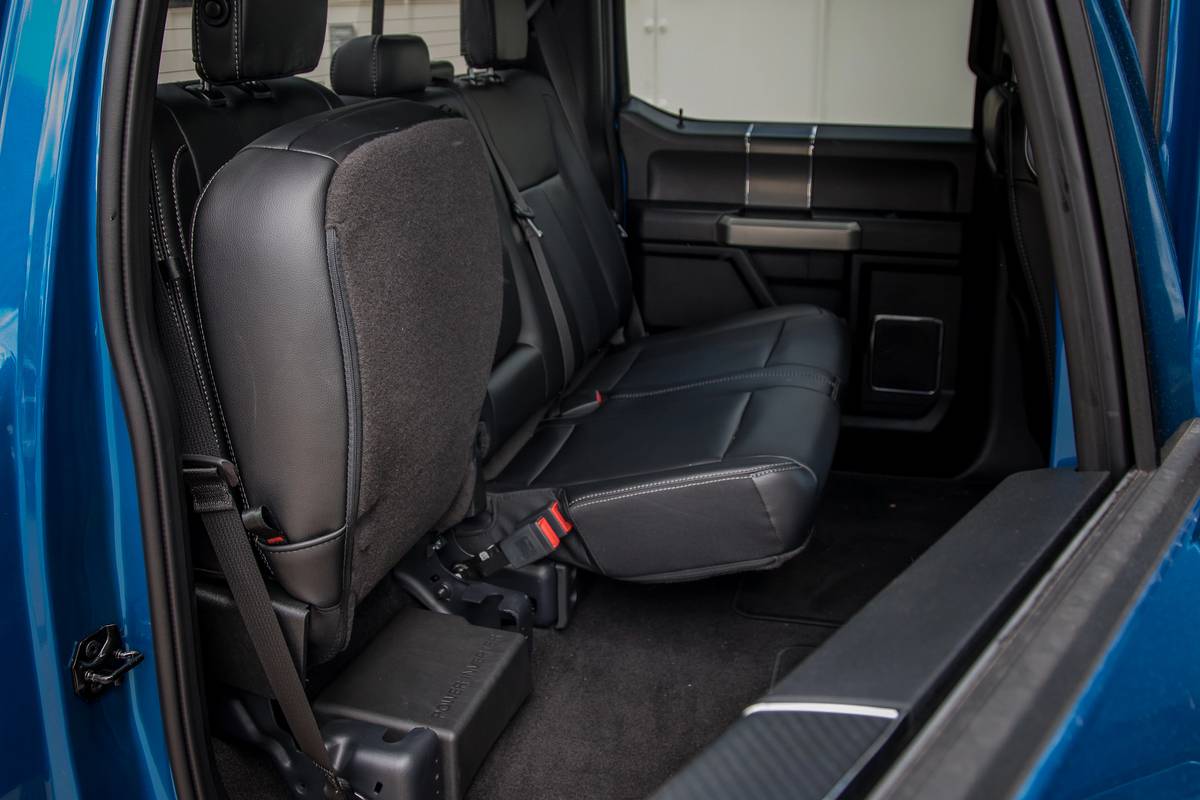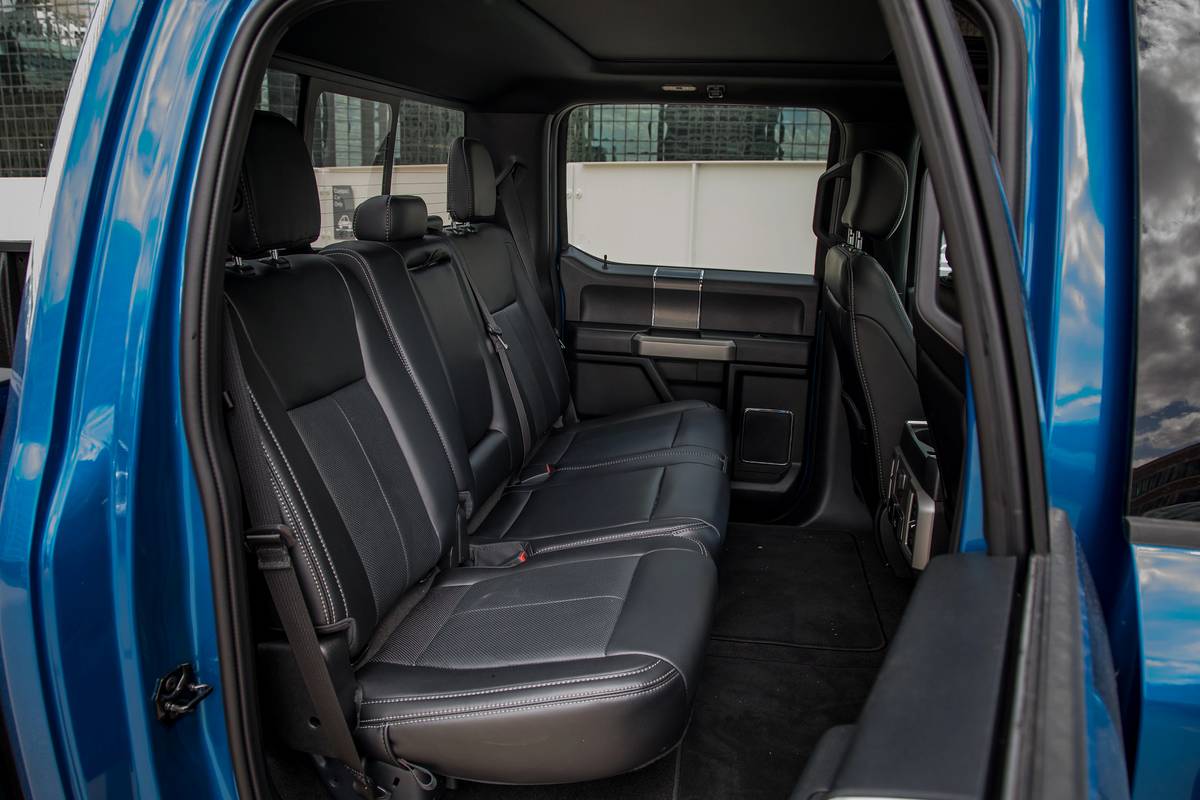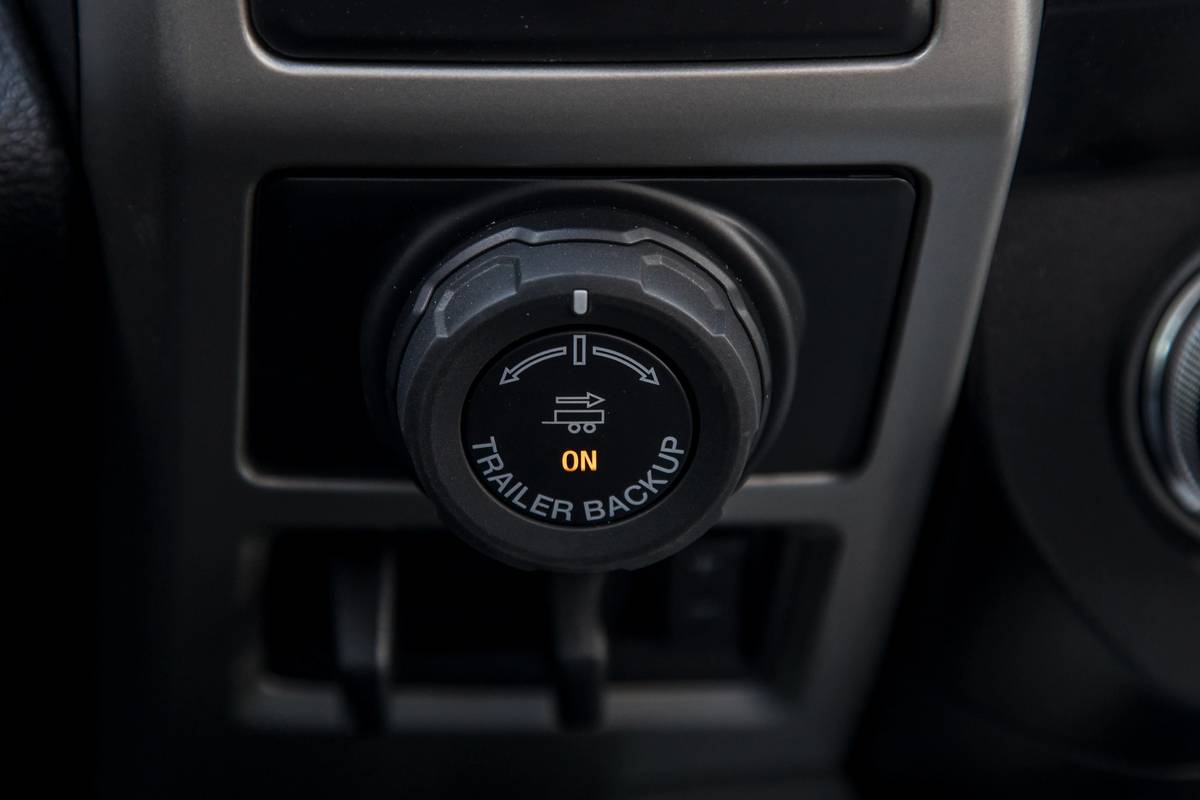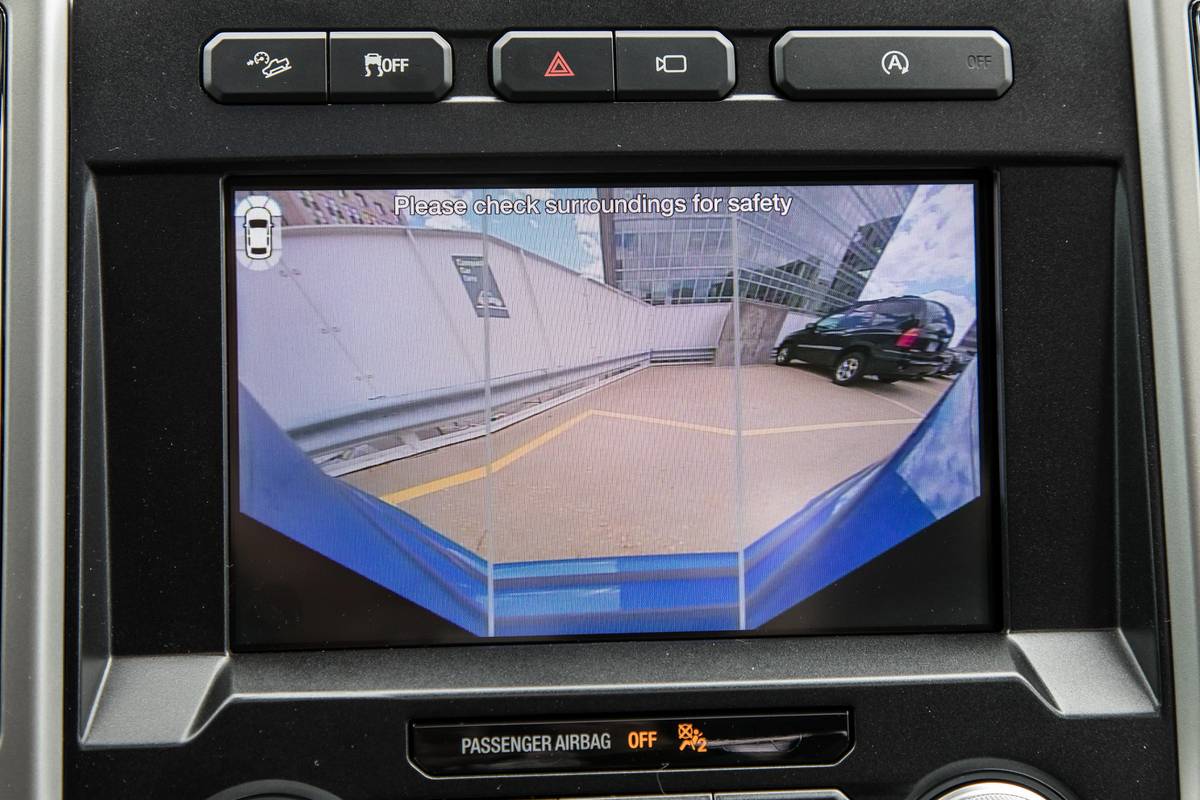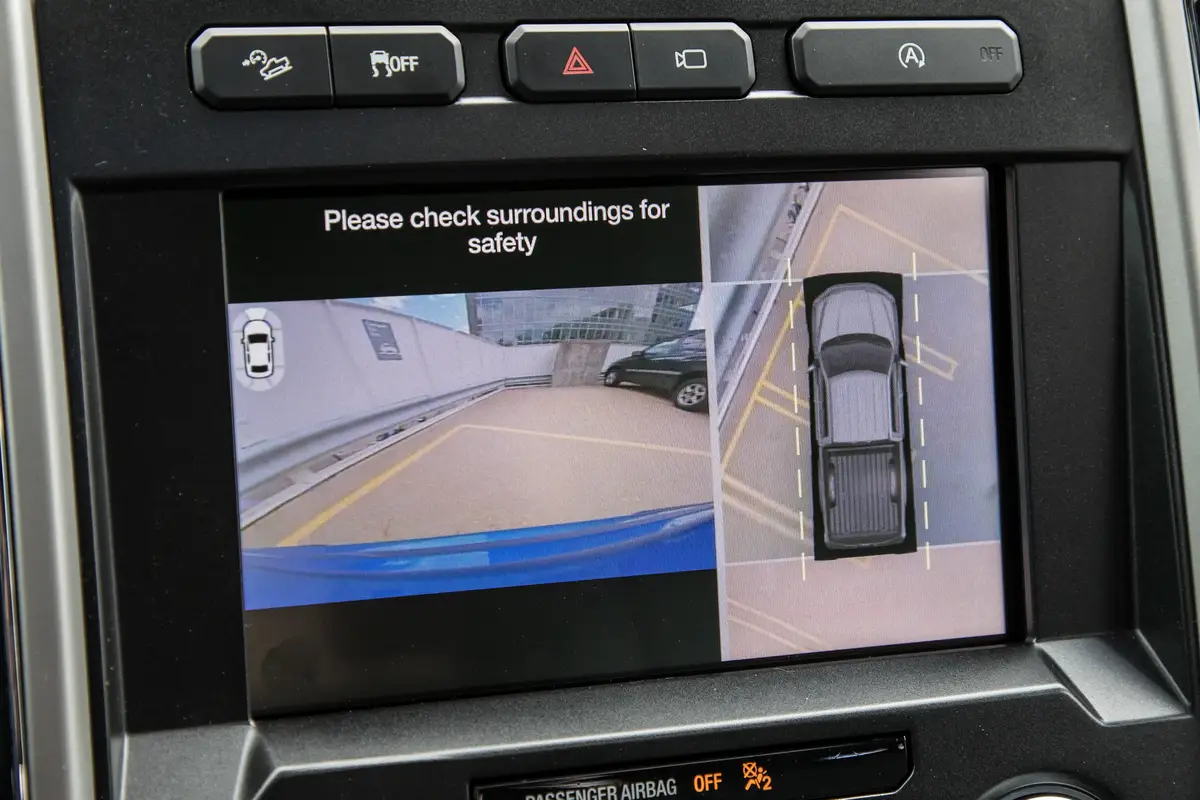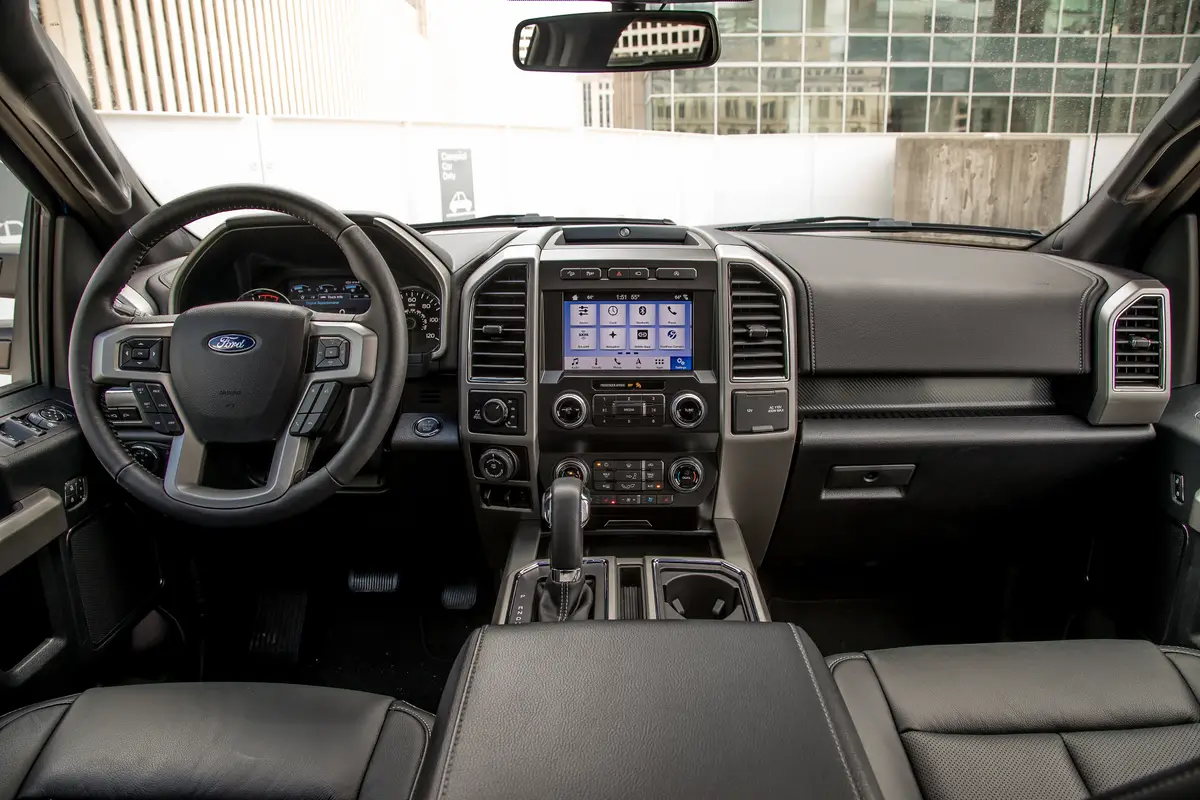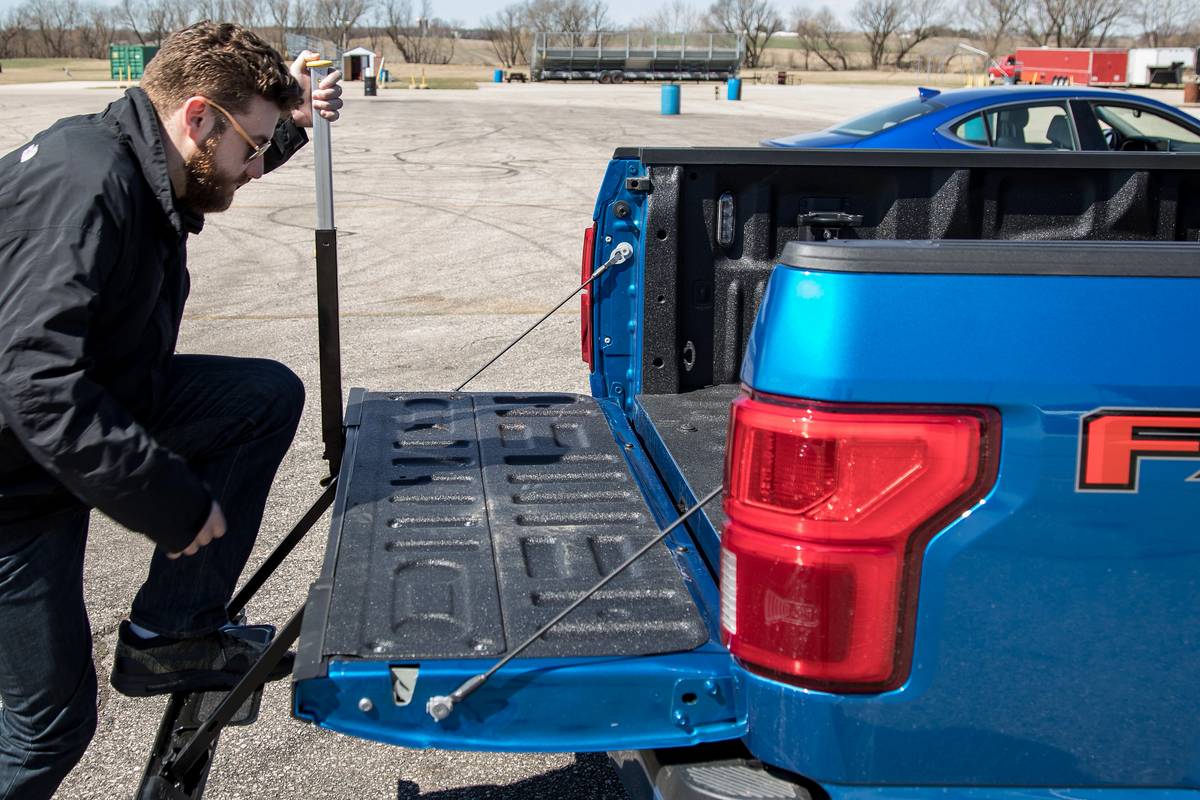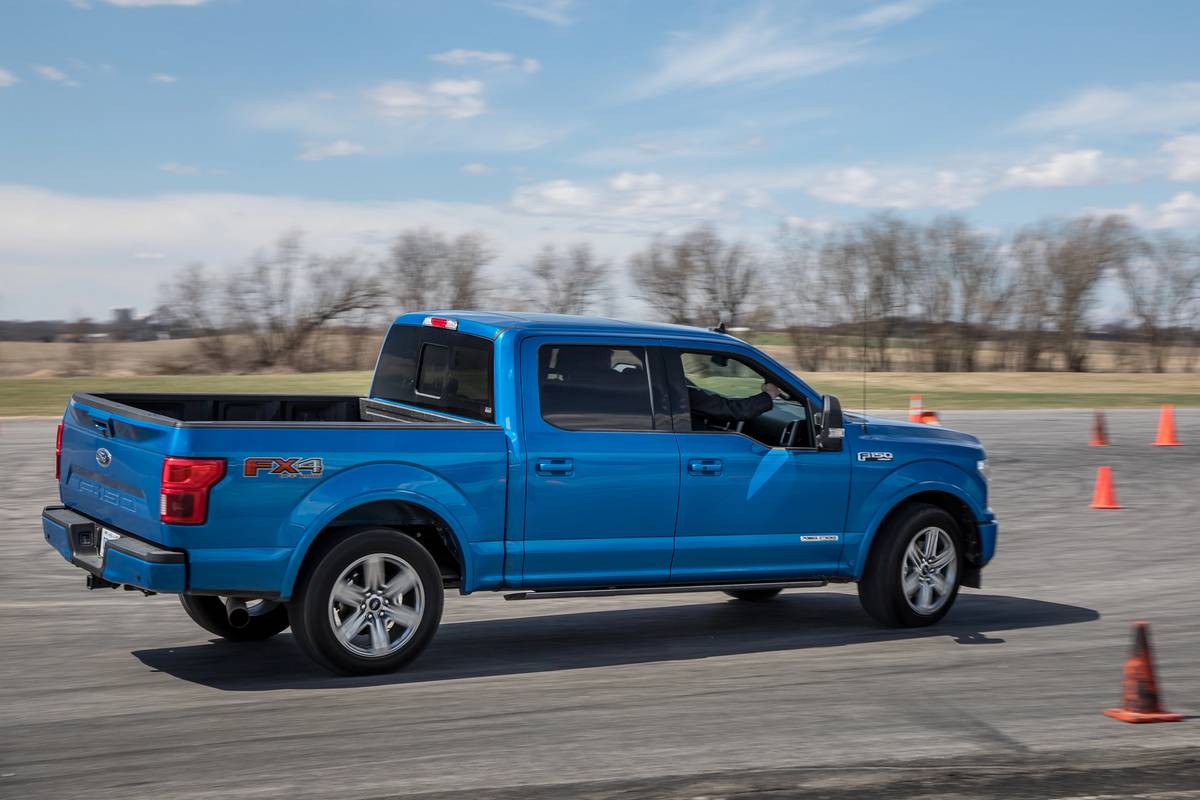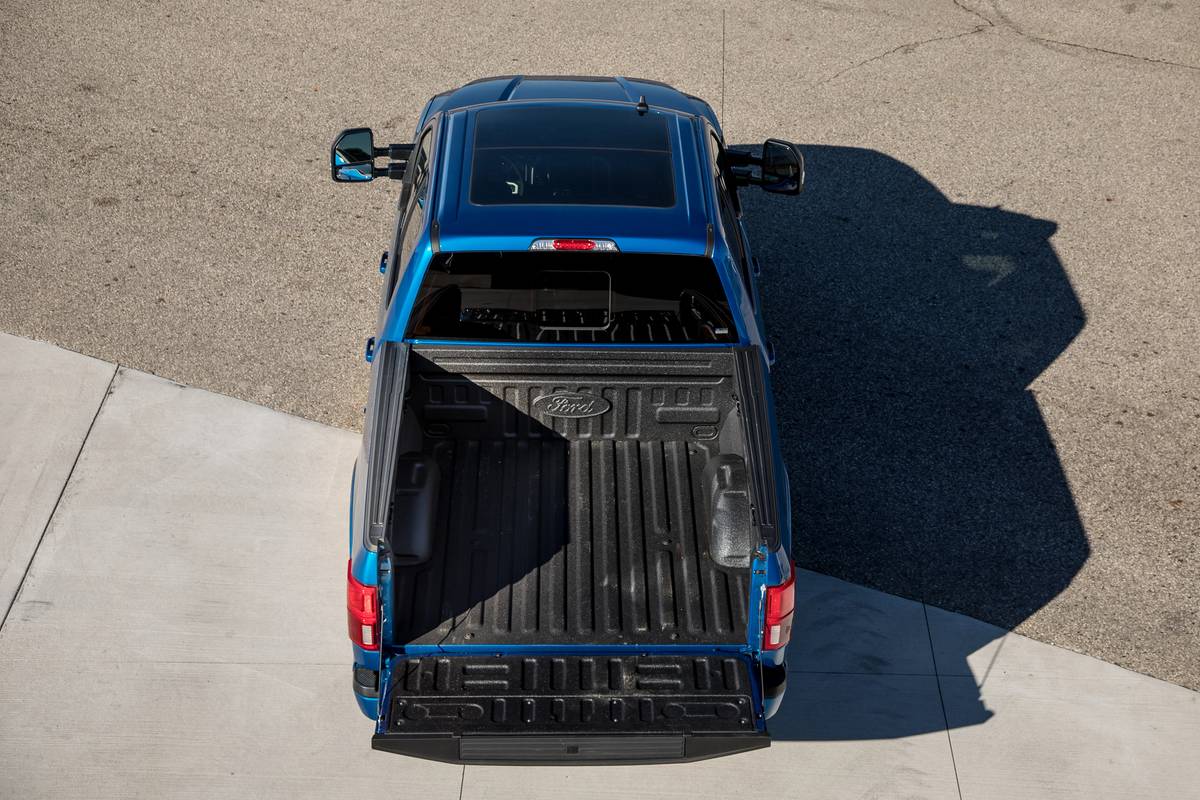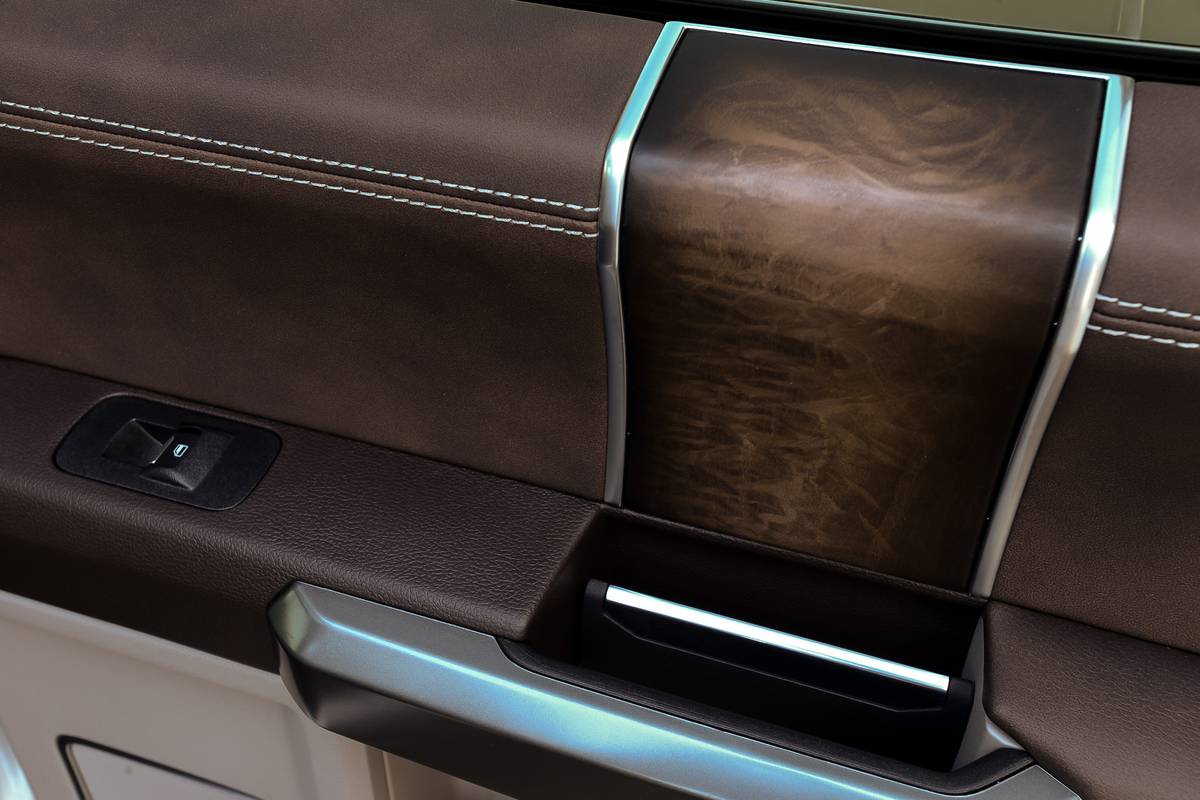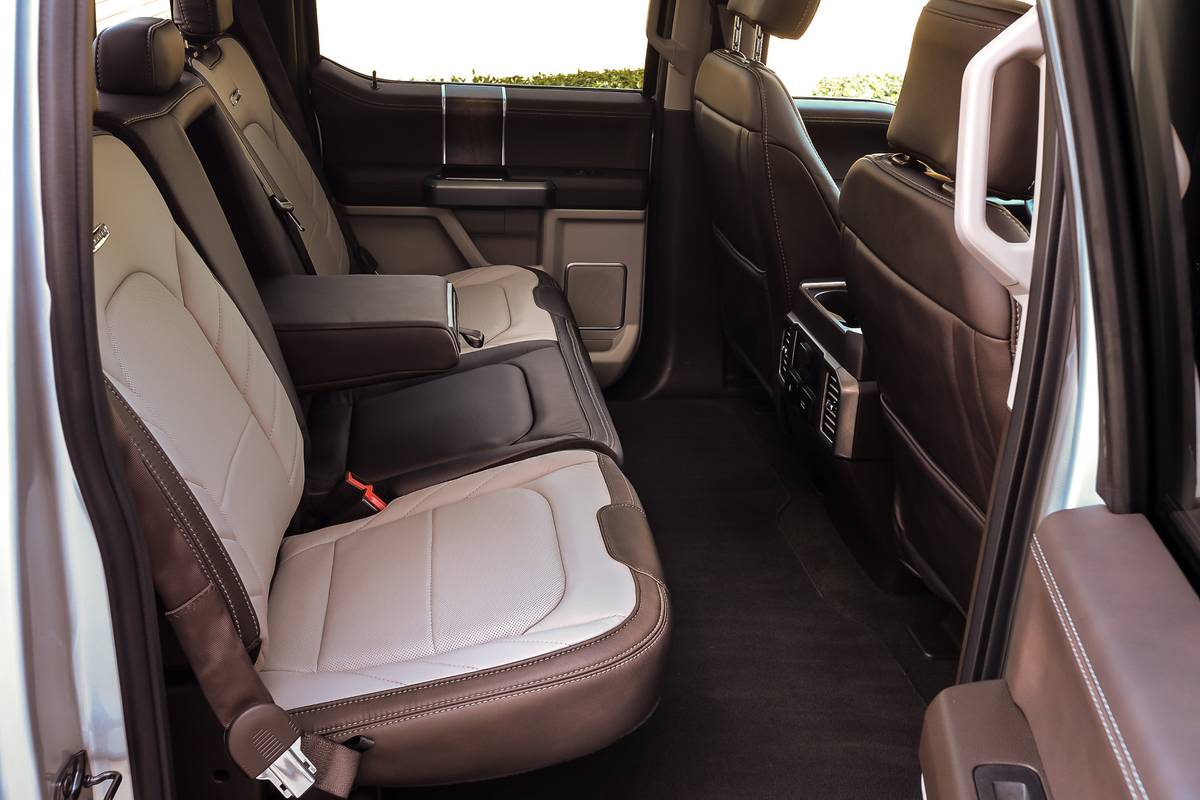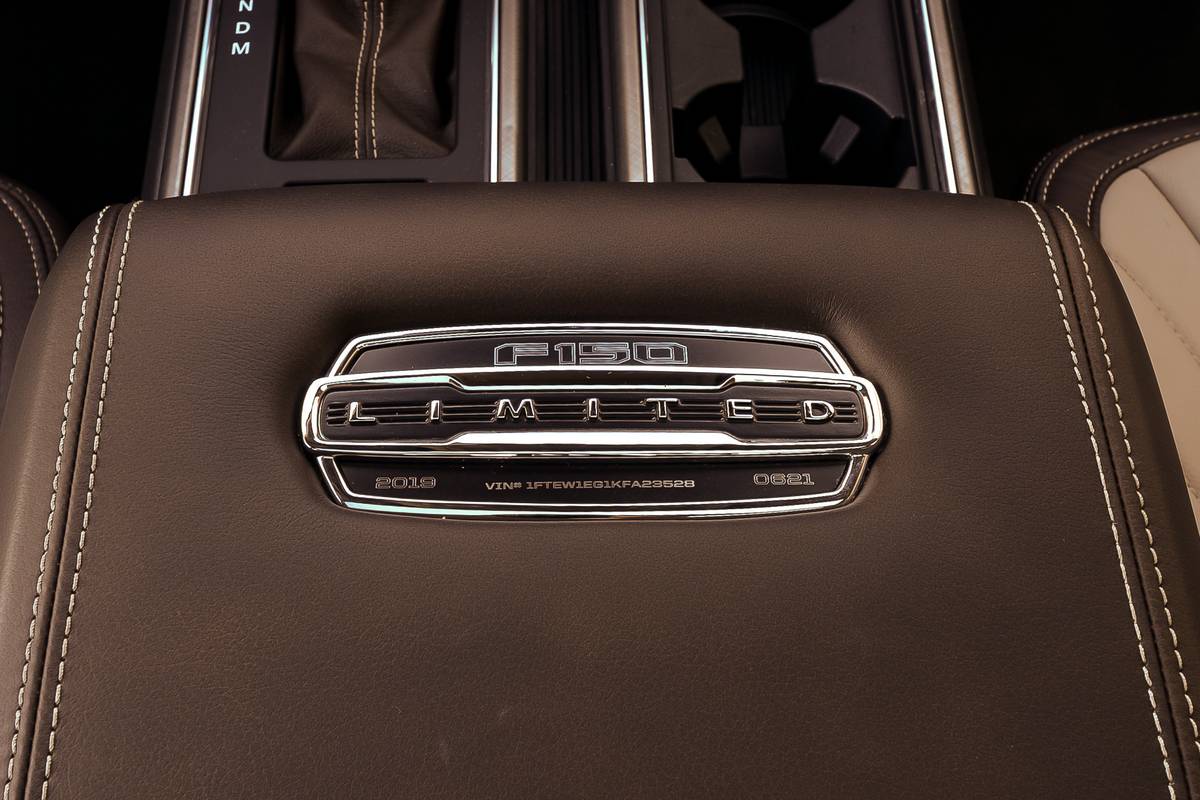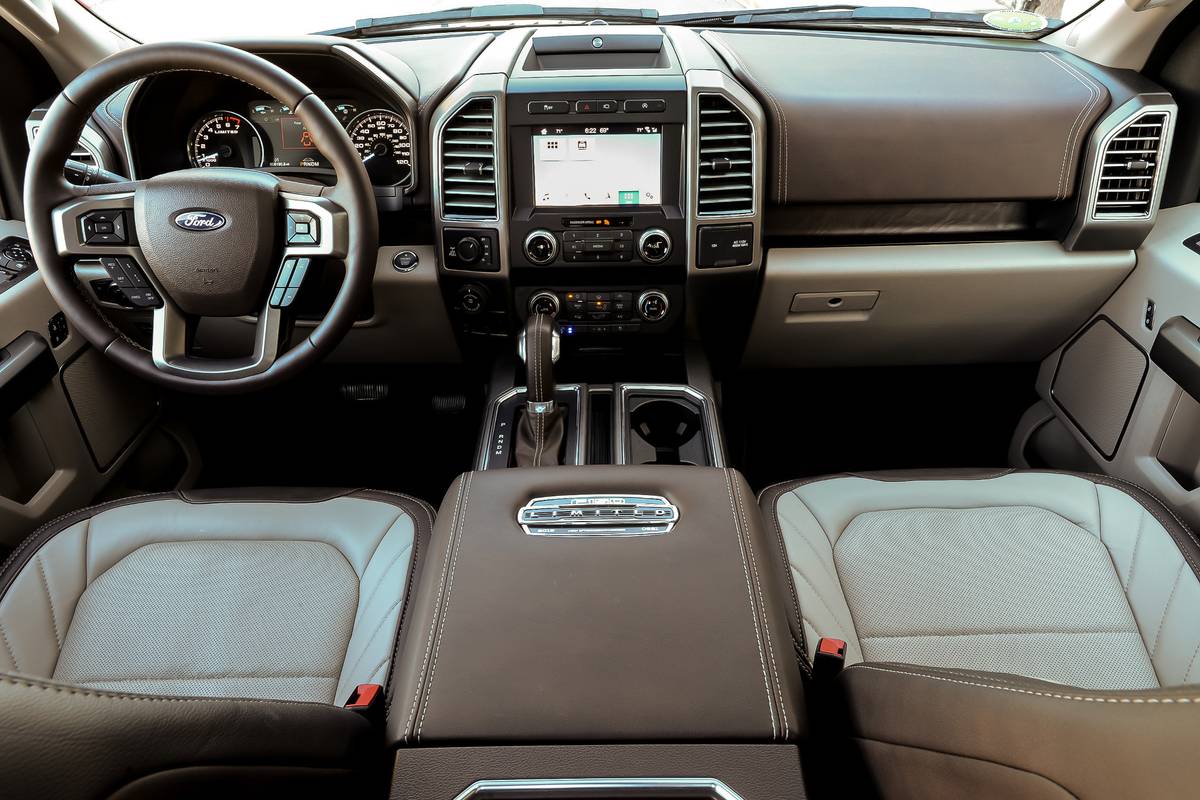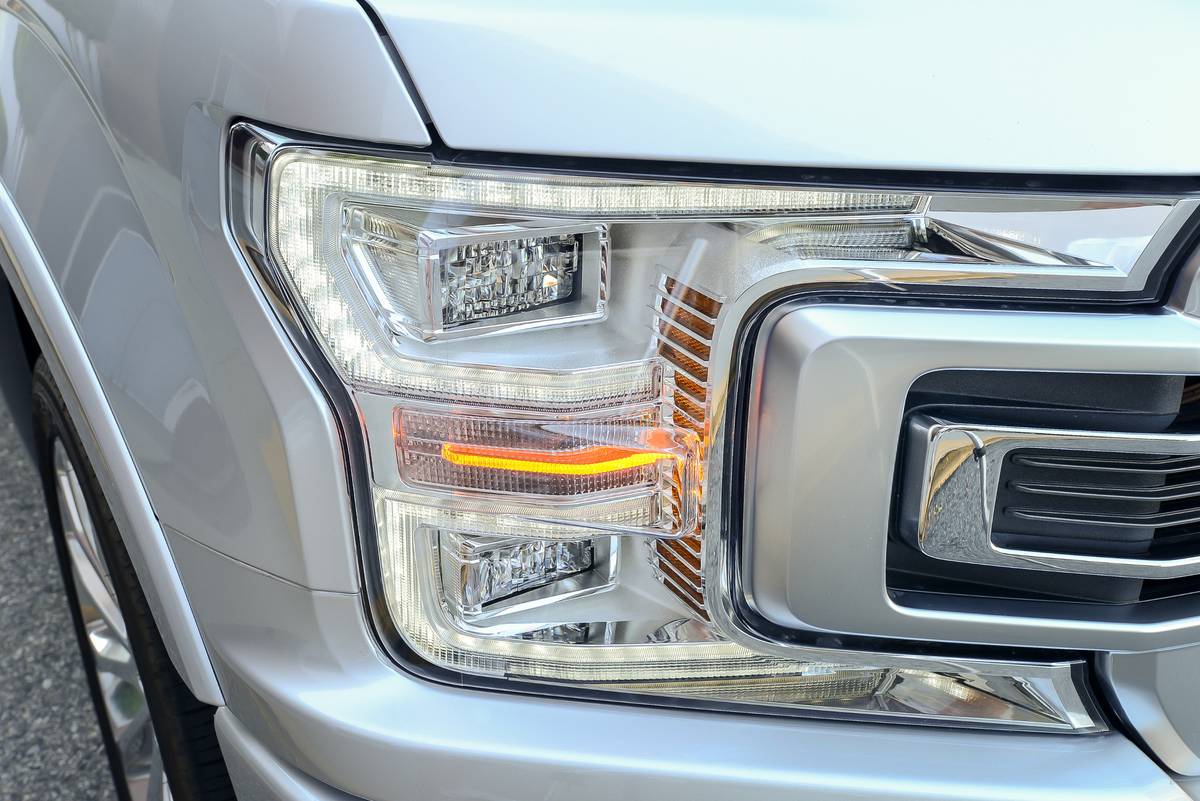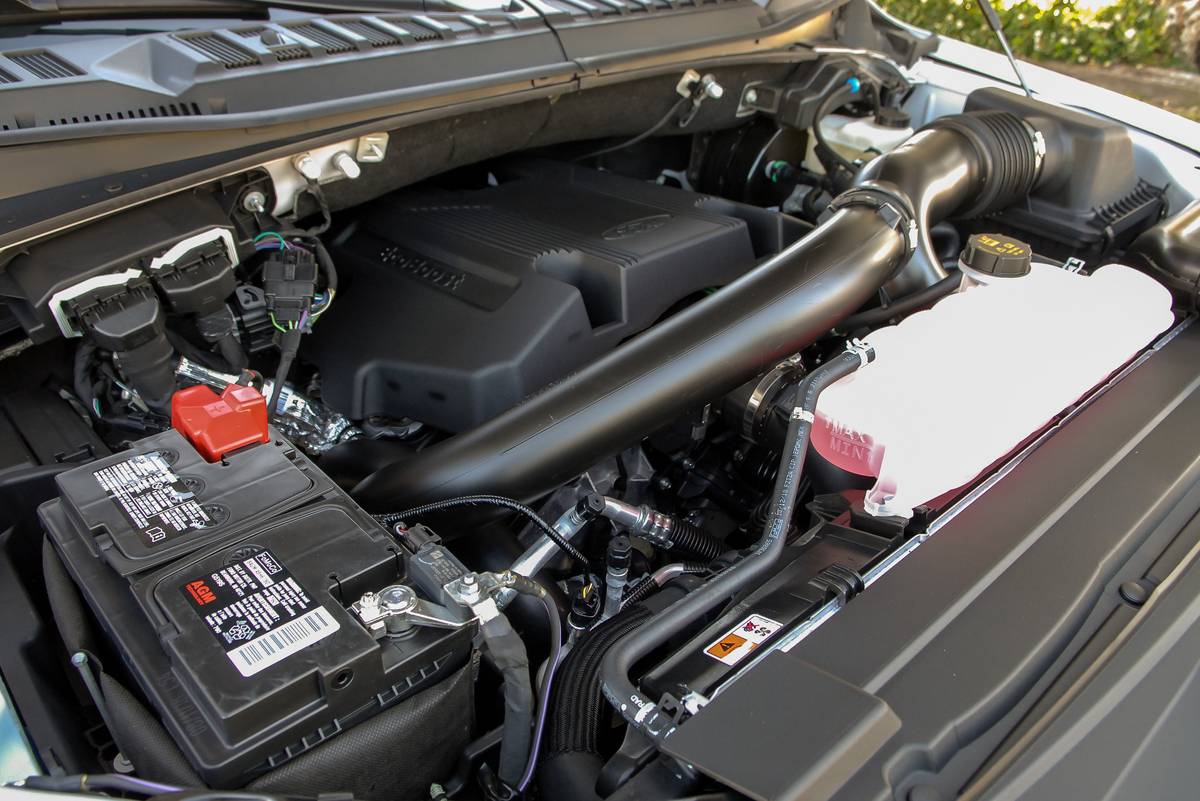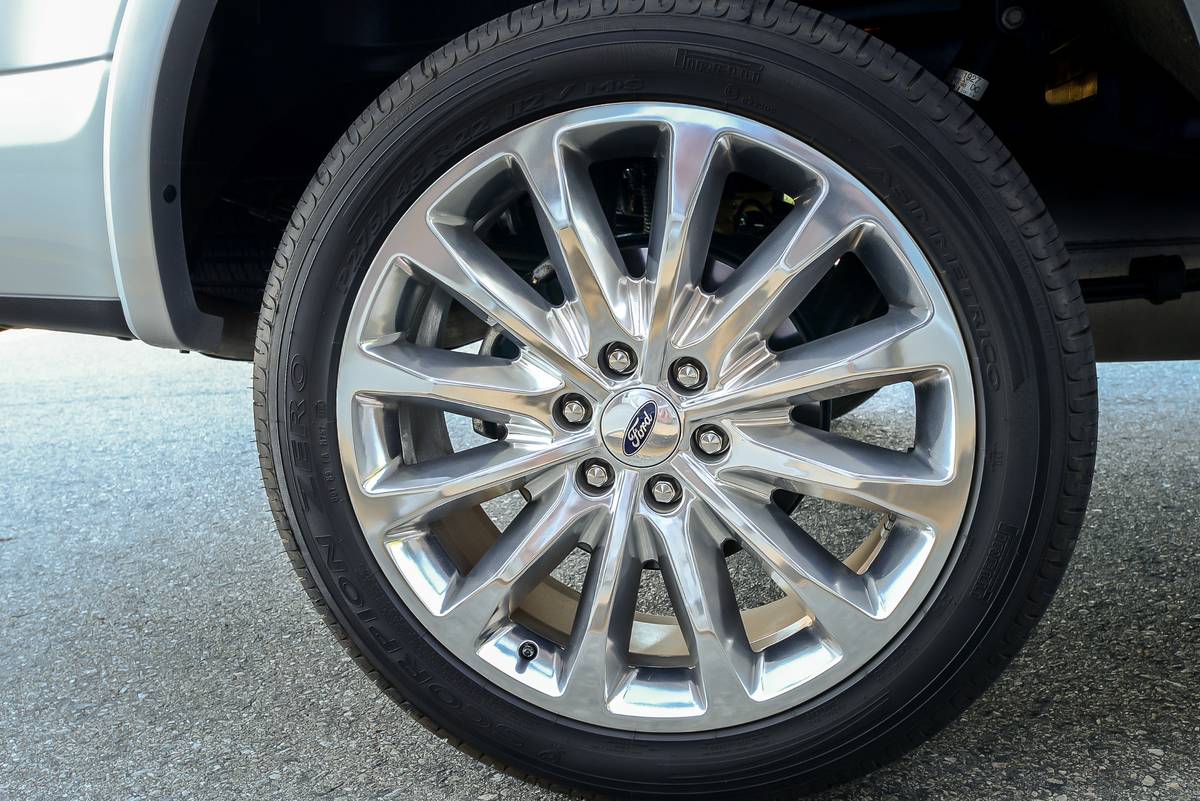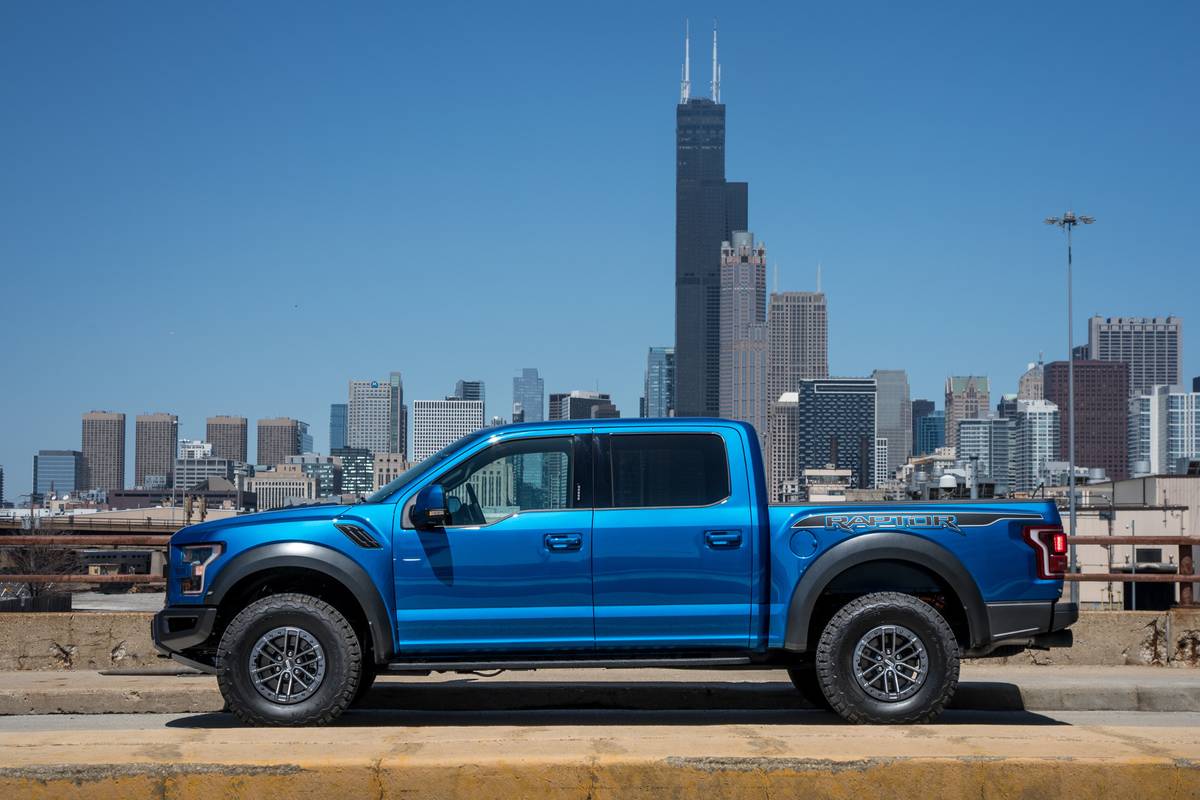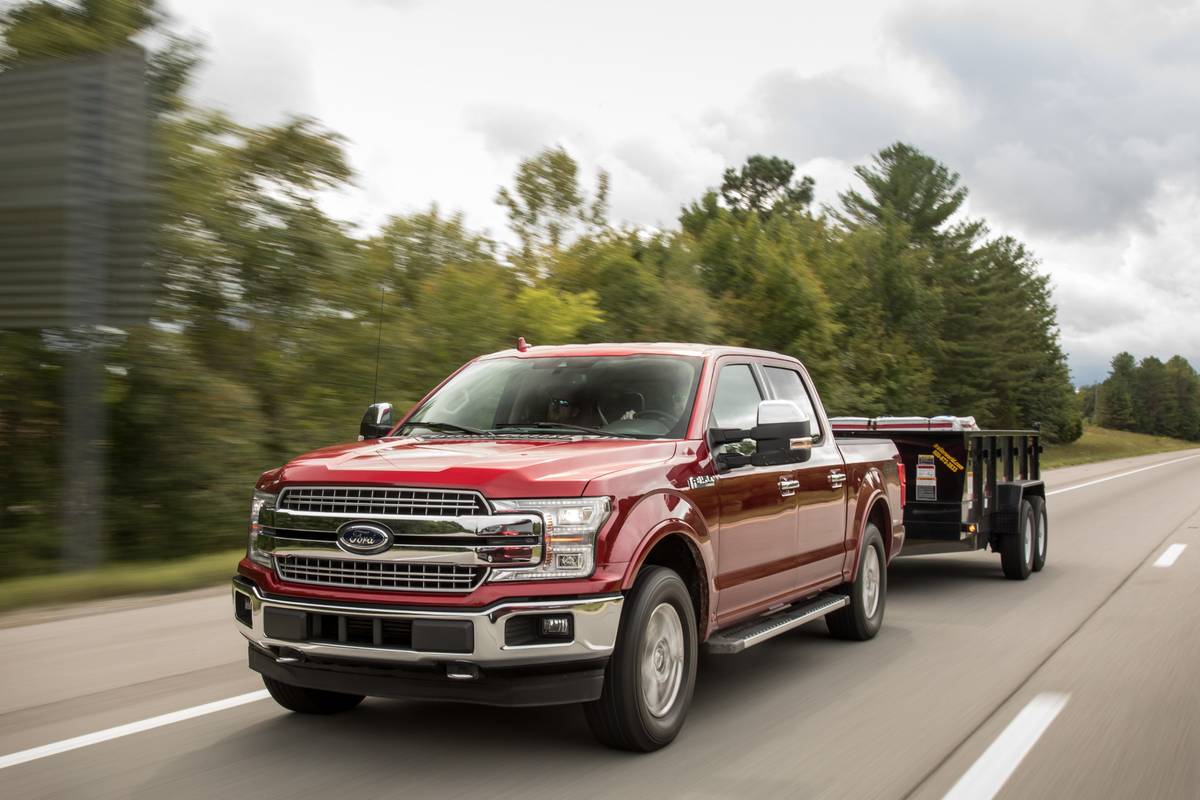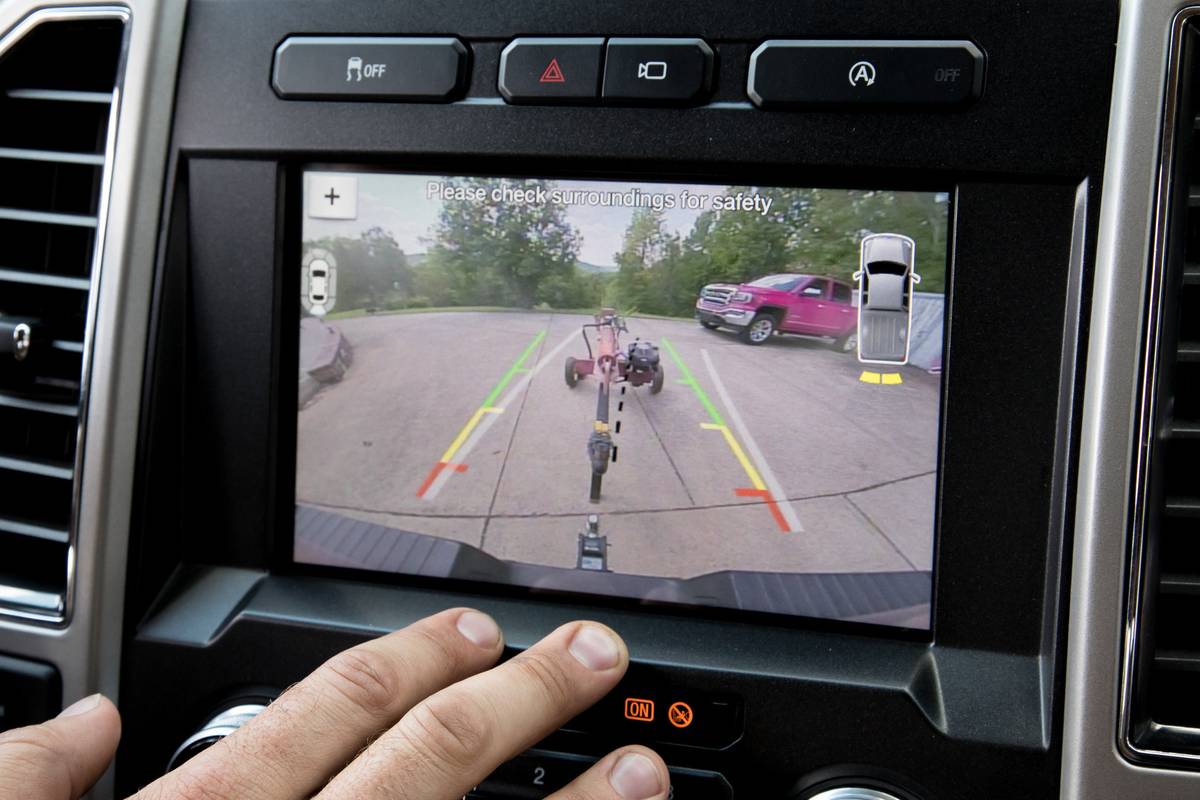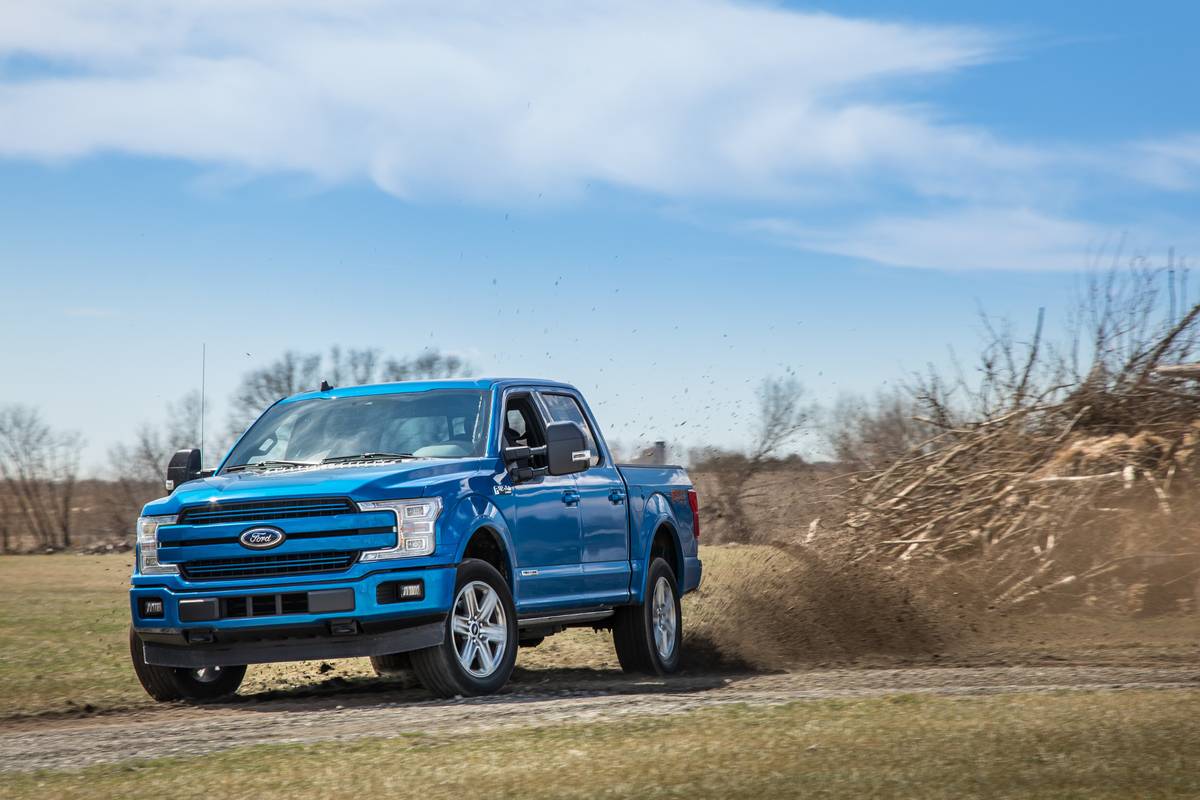
The verdict: Even five model years after its last full redesign, the 2020 Ford F-150 continues to be a well-rounded pickup truck with a configuration for almost every buyer.
Versus the competition: Meaningful updates have kept the F-150 competitive among more recent redesigns from Chevrolet, GMC and Ram.
Editor’s note: Our evaluation is based on a 2019 Ford-F-150 but covers 2019 and 2020 model years; little of substance has changed for 2020.
We’ve driven every version of the Ford F-150, using it to work and play while towing, hauling and driving off-road. Despite not being fully redesigned since the 2015 model year when the F-150 switched to aluminum-alloy body construction, the F-150 placed second in our exhaustive half-ton test after a weeklong evaluation of towing/payload performance and drivability. New engines, a 10-speed automatic transmission and updated features have kept the F-150 from falling too far behind its competition, and it remains a recommendable truck. A light-duty diesel engine recently became an option, and the Limited trim level got the F-150 Raptor’s high-output V-6, while the Raptor also received noteworthy changes. I’ll focus this review primarily on those three topics; you can read our 2018 F-150 review of the 5.0-liter V-8 for drivability impressions with the 10-speed that remain unchanged, and our 2016 F-150 SuperCab twin-turbocharged 2.7-liter V-6 review that still has relevant impressions about the well-roundedness of that engine.
Related: Ford F-150: Which Should You Buy, 2019 or 2020?
What’s New for 2020?
For 2020, there are no mechanical or interior changes to the F-150, though some features and options have been reconfigured. Ford’s Co-Pilot 360 is now standard on Lariat, King Ranch, Platinum and Limited trims, adding blind spot monitoring, lane keep assist and automatic high beams; forward collision warning with automatic emergency braking is also part of this grouping and was included standard in all F-150s for 2019. On the off-road F-150 Raptor, the former Raptor Technology Package that included adaptive cruise control, lane keep assist and rain-sensing wipers has been discontinued, and those options have been lumped into other packages (mid-grade and luxury).
Ford F-150 Limited
The F-150 Limited’s high-output 3.5-liter, new in 2019, is a powerhouse engine that’s a riot to drive if you have gasoline in your veins — and green in your pocket, considering the $69,430 starting price with destination. For 2019, Ford stuffed the Raptor’s 450-horsepower, 3.5-liter EcoBoost engine into a non-Raptor for the first time, fitting the turbocharged V-6 under the hood of the top Limited trim where it produces 510 pounds-feet of torque.
As an uplevel engine over the regular 3.5-liter EcoBoost (producing 75 hp and 40 pounds-feet more), the high-output version bridges a content gap, filling the same role as the GM duo’s 420-hp, 460-pounds-feet-of-torque 6.2-liter V-8. GM makes this V-8 available as an alternative to the 5.3-liter V-8 in the Chevrolet Silverado 1500 and GMC Sierra 1500 at a wider range of trims and pricing, however, starting well into the $40,000 range.
Ford’s high-output 3.5-liter serves up turbo whistling noises like a big rig and almost drives like a diesel, too, with its generous torque available at low engine speeds; I prodded the accelerator pedal in the Limited more like a sports car than a pickup truck. The 10-speed’s transmission calibration takes advantage of the torque bath down low with short shifts during light throttle that pours on acceleration at low engine and vehicle speeds.
Because of the Limited’s weight (5,135 pounds with two-wheel drive and 5,414 pounds with four-wheel drive), its payload is shrunken in the quest for luxury and power; at a given gross vehicle weight rating, more curb weight means lower payload capacity. Trim-wide, the F-150 has a maximum payload of 3,270 pounds when properly configured with the 5.0-liter V-8 engine, but the Limited 3.5-liter’s 1,520-pound max payload is the lowest maximum of any of the F-150’s engine offerings, lower even than the mid-size 2019 Ford Ranger’s lowest payload of 1,560 pounds. The Limited’s maximum trailer weight is still respectable, however, at 11,100 pounds with two-wheel drive and 9,300 pounds with four-wheel drive. Note that trailer tongue weight counts toward the Limited’s payload, so at the recommended 10% max tongue weight, you’d have only 420 pounds left to carry people and cargo after 1,100 pounds of tongue weight is applied.
The Limited really is more about power and luxury than rough ‘n’ tough truck stuff, and power it certainly has in exceeding amounts. But it doesn’t quite hit the mark in luxury compared with the most opulent in the class, the Ram 1500 Limited and Laramie Longhorn, which we named our 2020 Luxury “Car” of the Year. Interior quality is where the F-150 shows its age, with a more mechanical, industrial look and feel than the rich luxurious trimmings of a top-level Ram 1500. Plus, its ride is choppy when the bed is empty compared with a Ram riding on its optional air suspension, and it doesn’t have the well-damped ride quality of the Chevrolet and GMC trucks. The F-150 Limited’s 22-inch wheels and short-sidewall tires don’t do its ride quality any favors, either, and at an as-tested $74,000, the F-150 Limited needs a little more in the luxury department — or a lower asking price.
Ford F-150 Raptor
There’s simply no parallel to the F-150 Raptor. The Ram 2500 Power Wagon is a workhorse, and the Chevrolet Colorado ZR2 and Jeep Gladiator Rubicon have their specialties, but the Raptor pairs go-anywhere capabilities with the playfulness of a Mustang GT (like the Limited, the Raptor’s 450-hp, high-output 3.5-liter is a riot to drive). I was a judge on our sister site PickupTrucks.com’s 2017 Monster Factory Off-Road Challenge, in which the Raptor took the top spot. It has a well-roundedness for high-speed washboard roads as well as slow-speed rock crawling courtesy of a 6-inch-wider track than the F-150, meaty tires, a 4.10 axle ratio, 13 inches of front and 13.9 inches of rear suspension travel, and various selectable driving modes that adjust electronic systems and four-wheel drive to match the terrain.
The F-150 Raptor only got better in 2019, adding standard electronically adjustable shock absorbers (versus fixed firmness in previous years) that better balance the two extremes of on- and off-road. On-road, body control is more civilized, while off-road, a new Trail Control feature (an off-road, low-speed cruise control) helps with slower-speed driving.
Driving on-road, the Raptor would previously dive, squat and lean like your grandparents’ Mercury Grand Marquis, but starting in 2019, the ride became flatter, more predictable and a lot more enjoyable as the smart shocks automatically adjust firmness in response to inputs from the road and driver, as well as in selectable driving modes for various terrain. These shocks can now detect when the Raptor is airborne and will ramp up firmness when fully extended to counter bottoming out during landing.
Also added in 2019 were optional Recaro seats that are now my favorite Recaros in any Ford. They’re snug, have creature comforts, aren’t overly bolstered and are good for varying body types. They hold you in tightly but also provide heated and ventilated functions. Other versions of Recaro seats in Fords (Mustang, Focus, Fiesta) are overly aggressive and get mixed reviews from anyone who isn’t 6 feet tall and 160 pounds.
If there’s anywhere the Raptor comes up short, it’s with maximum trailering capacities of 6,000 pounds for extended-cab and 8,000 pounds for crew-cab versions, and maximum payloads of 1,000 pounds for the extended cab and 1,200 pounds for the crew cab. This isn’t unheard of with extreme factory off-road trucks like the Power Wagon or Raptor because specialty suspensions with increased articulation — and the weight added by beefier, more durable parts — can diminish traditional truck capabilities.
Ford F-150 Power Stroke Diesel
Our impressions of the turbo-diesel 3.0-liter in the half-ton F-150, first offered in 2018, are mixed, especially after driving the latest Ram 1500, Chevrolet Silverado 1500 and GMC Sierra 1500 with their optional small-displacement light-duty diesel engines, which are new alternatives to their three-quarter/one-ton heavy-duty diesel power plants. The F-150’s 3.0-liter Power Stroke makes 250 hp and 440 pounds-feet of torque — turbo-diesel Chevrolets and GMCs generate 277 hp and 460 pounds-feet, and Ram’s diesel puts out 260 hp and 480 pounds-feet.
The diesel has a rush of torque and requisite diesel rattling noises in the lighter-duty F-150, saving some coin and backaches compared with a Ford Super Duty, though at a fraction of its capability. What’s curious about this offering in a Ford is that the existing lineup of gas EcoBoost engines have many diesel-like driving qualities, including generous amounts of low-end torque, which means the light-duty diesel isn’t a clear choice over a 3.5-liter EcoBoost engine that makes 375 hp and 470 pounds-feet of torque. A 2020 F-150 XLT diesel extended cab starts at $44,420, while the same truck with the 3.5-liter EcoBoost is $41,610. Though the diesel is more efficient according to EPA figures (24 mpg combined versus 19 mpg), diesel fuel is currently expensive enough compared with regular gas ($1.84 versus $2.52) that it makes the choice cloudy — only $50 in annual savings from a significant 6 mpg combined improvement means cost savings shouldn’t really be a consideration given how expensive it is to option the diesel engine.. The F-150 diesel’s fuel economy is just short of competitors with a maximum combined 24 mpg versus the Ram EcoDiesel’s 26 mpg combined and the Chevrolet Duramax’s best 27 mpg.
What the light-duty diesel aims to offer is a rich towing experience with improved fuel economy, though we haven’t been able to give the F-150 Power Stroke an exhaustive towing mileage test yet. We weren’t enamored with the initial towing performance of the diesel 3.0-liter primarily because of transmission tuning with the 10-speed that didn’t downshift enough gears for added oomph when needed, though it did make hauling payload quite easy.
Given the lack of a clear financial advantage to the diesel engine, you’d either have to rack up a lot of miles to make up the difference in upfront costs, need the available 1,000 miles of maximum fuel range per tankful or really want diesel noises in an F-150 to choose the 3.0-liter Power Stroke over the already potent performance of a 3.5-liter EcoBoost. Though the 3.5-liter EcoBoost is usually a disappointment in towing fuel economy, one recently surprised us by returning higher mileage than four other trucks over the same towing loop. Plus, out of roughly 102,000 new F-150s in Cars.com’s national inventory, only 374 are currently listed as diesels, so finding a 3.5-liter will be easier, too.
F-150 Towing
The F-150 is rated to tow between 5,000 and 13,200 pounds among its six different engines, all of which require the Max Trailer Tow Package for the highest ratings. The Max Trailer Tow Package includes a 3.55:1 axle ratio, electronically locking rear differential, 36-gallon fuel tank, auxiliary transmission and engine coolers, a Class IV receiver hitch, integrated trailer brake controller and an upgraded front stabilizer bar.
In a recent towing test, an F-150 Lariat with the 375-hp, 3.5-liter EcoBoost performed well against the Chevrolet Silverado 6.2-liter, GMC Sierra 6.2-liter, Ram 1500 5.7-liter with eTorque and Nissan Titan 5.6-liter. Towing 6,100 pounds from the bumper, the F-150 was deemed the towing champ thanks to the 10-speed automatic transmission and how confidently the truck towed, along with the best towing mirrors and surround-view camera setup. That 10-speed transmission also accounted for the best fuel economy of the group while towing (13.2 mpg), which is an area where the previous EcoBoost V-6 engines struggled in our testing.
How the F-150 Compares to Chevrolet Silverado, Ram 1500
In our quest to find the best half-ton truck, we compared an F-150 Lariat crew cab with the 3.5-liter EcoBoost to the Chevrolet Silverado 1500 and GMC Sierra 1500 with the 6.2-liter V-8, Nissan Titan with the 5.6-liter V-8 and Ram 1500 with the eTorque 5.7-liter V-8. The F-150 placed second behind the GMC 1500 and ahead of the Ram 1500, performing well in towing, fuel economy and measured acceleration. The F-150 drives like a much smaller truck than competitors, almost SUV-like in its agility and how light it is on its feet with responsive steering that reacts quickly to inputs. It does this with a massive cabin (crew cab) with exceptional room for backseat passengers (and under-seat storage too).
Where the F-150 struggled in that test was in value as a $60,000 truck that lacked advanced safety features and fell short in interior quality compared with similarly priced competitors. For 2020, the safety features omission is less of an issue because the tested Lariat trim now includes Ford’s Co-Pilot 360 standard with blind spot monitoring, forward collision warning with automatic emergency braking, lane keep assist and automatic high beams. What remains an issue is interior quality showing age with cheap-looking plastic on the dashboard, doors and steering wheel, especially on $60,000-plus versions. Even so, the F-150 remains competitive and a worthy consideration in almost all versions.
Cars.com’s Editorial department is your source for automotive news and reviews. In line with Cars.com’s long-standing ethics policy, editors and reviewers don’t accept gifts or free trips from automakers. The Editorial department is independent of Cars.com’s advertising, sales and sponsored content departments.
































